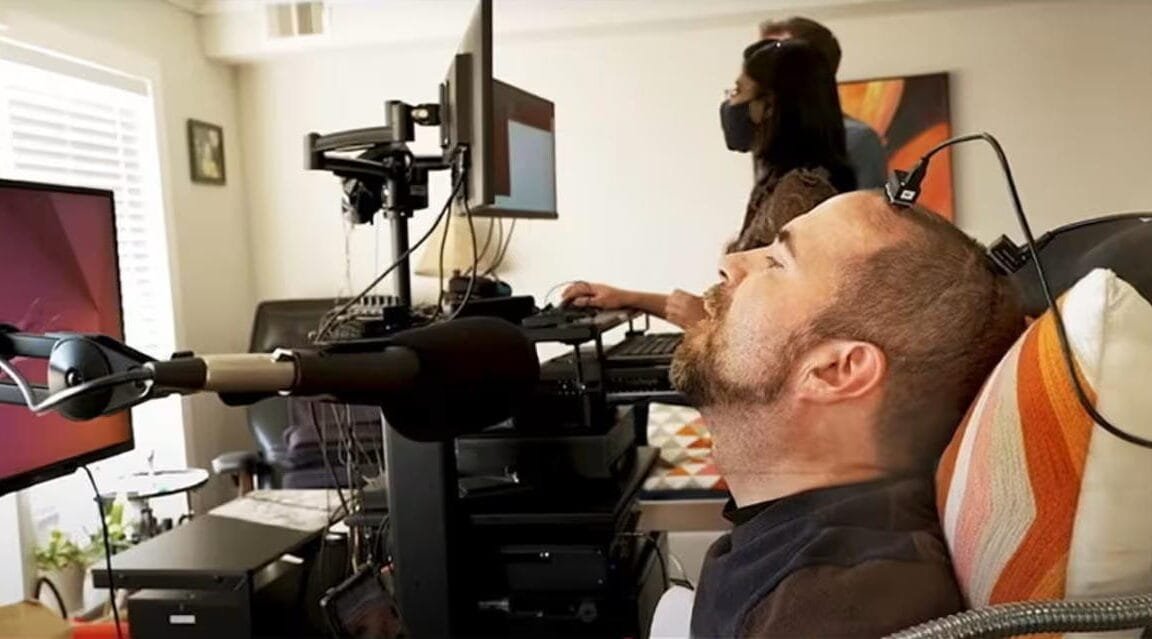Neuroscientists are racing to turn brain waves into speech
Not Neuralink - New BCI interfaces translate neural signals directly into audible words, bypassing damaged vocal pathways.

▼ Summary
– Brain-computer interface (BCI) technology is advancing towards restoring natural, real-time speech for individuals with paralysis from stroke, injury, or diseases like ALS.
– Researchers focus on decoding brain signals associated with the intention to move speech-related muscles, rather than abstract thoughts.
– Electrode arrays, including electrocorticography (ECoG) and microelectrode arrays, capture brain signals during speech attempts, which are then translated into audible speech.
– Advanced AI, particularly deep learning algorithms, interprets complex brain data to map neural patterns to speech sounds or words, achieving high accuracy and speed.
– Significant challenges remain, including the invasiveness of electrode arrays and ensuring long-term stability and reliability of implants and algorithms.
For individuals unable to speak due to paralysis from stroke, injury, or diseases like ALS, communication often relies on slow, laborious methods. But a surge of progress in brain-computer interface (BCI) technology is bringing the possibility of natural, real-time speech restoration closer than ever. Researchers are demonstrating increasingly sophisticated systems that decode brain activity related to speech attempts and synthesize audible words.
Decoding the Brain’s Speech Intentions
The core goal isn’t reading abstract thoughts, a feat far beyond current capabilities. Instead, as the Ars Technica article highlights, the focus is more precise: *”Instead of trying to decode thoughts directly,a task neuroscientists are nowhere near achieving,most current research focuses on translating the brain signals associated with the *intention* to move the lips, tongue, jaw, and larynx.”* Scientists are tapping into the brain’s motor cortex, the area orchestrating these physical speech movements.

To capture these signals, researchers typically use electrode arrays. Some systems employ electrocorticography (ECoG), where a pad of electrodes rests on the brain’s surface. Others utilize microelectrode arrays that penetrate slightly into the brain tissue for potentially finer-grained signals. As Edward Chang, a neurosurgeon at the University of California, San Francisco (UCSF) involved in this field, stated, the aim is to “translate brain signals related to trying to speak directly into audible speech.” These surgically implanted devices record the complex electrical patterns generated during attempted speech.
AI Turns Signals into Sentences
The raw brain data is incredibly complex. The critical next step involves using advanced artificial intelligence, often deep learning algorithms, to interpret these patterns. These AI models are trained to recognize the neural signatures corresponding to different speech sounds or words. The objective is clear: “to map those patterns to intended speech sounds or words at speeds approaching natural conversation,” as the article puts it.
Progress has been significant. The article notes that researchers have demonstrated systems achieving “impressive accuracy rates, sometimes exceeding 90 percent for specific vocabularies.” Furthermore, speed is improving dramatically, overcoming the latency issues that plagued earlier iterations and moving towards the near real-time processing needed for fluid conversation. Personalization is also a target, as “Some systems even aim to recreate a user’s original voice based on previous recordings,” potentially adding a layer of naturalness to the synthesized output.
Obstacles on the Path
Despite the breakthroughs, significant hurdles remain before these technologies become widely available. The invasiveness of the current high-performance electrode arrays is a primary concern. As Ars Technica points out, “The biggest hurdle for widespread use remains the invasive nature of the most effective electrode arrays, which require complex surgery and carry inherent risks.”
Researchers are actively exploring less invasive methods, but these often come with trade-offs in signal quality. Ensuring the long-term stability and reliability of implants and the algorithms interpreting their signals is another critical area of ongoing work.
While the finish line isn’t immediate, the pace of innovation in translating brain waves into speech is undeniable. The potential to restore a fundamental human ability – communication – for those who have lost it provides powerful motivation for the scientists in this race.
(Source: Ars Technica)
